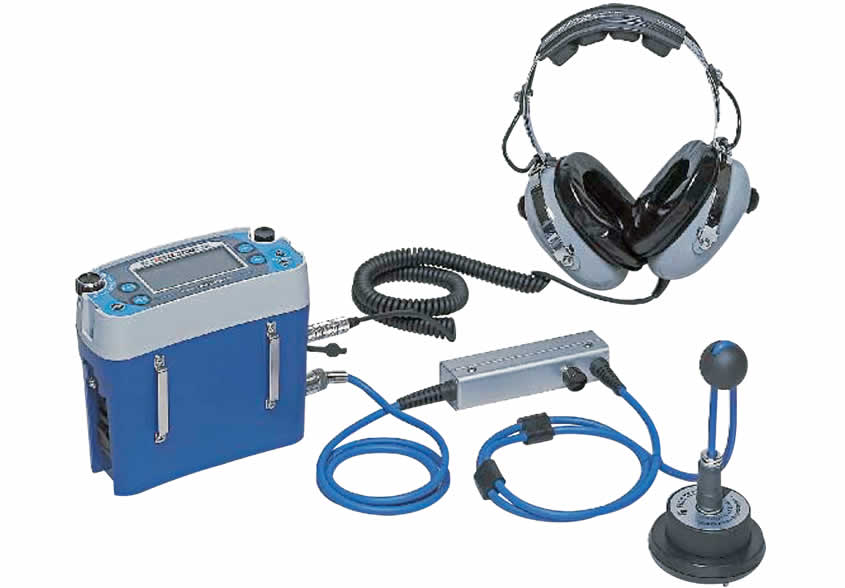Ingenious Solutions for Early Discovery of Water Leaks in Structures and Infrastructure
As the honesty of structures and facilities is paramount, the difficulty of very early detection of water leakages has stimulated innovative solutions that promise to transform the means we protect versus potential problems. From sophisticated leak discovery technologies to the implementation of IoT sensing units for real-time monitoring, the landscape of leakage prevention is advancing rapidly. Maker learning algorithms use a glimpse into the future of leakage forecast, while thermal imaging provides a non-intrusive technique for determining covert leaks. Automated water circulation evaluation systems are reshaping how leakages are recognized and addressed, paving the method for an aggressive approach to water leak detection. Each of these remedies holds the key to guaranteeing the integrity and long life of our constructed environment, prompting a shift in the direction of an extra lasting and efficient future.
Advanced Leakage Discovery Technologies
Advanced leakage discovery technologies, equipped with advanced sensors and algorithms, play an important function in quickly recognizing and determining water leakages in different settings. These technologies employ a mix of acoustic, thermal, and electro-magnetic noticing methods to spot leaks properly. Acoustic sensing units discover the noise of leaving water, enabling specific localization of the leakage source. Thermal imaging finds temperature level changes brought on by water leak, supplying an additional reliable technique for leak recognition. Electromagnetic sensors can recognize modifications in magnetic fields triggered by water, providing yet an additional layer of leakage detection capacity.

IoT Sensors for Real-Time Surveillance
In the world of modern water leak detection, the integration of IoT sensing units for real-time monitoring represents an essential innovation in enhancing positive leak discovery capacities. These sensors provide constant surveillance of water supply, providing real-time data on water flow rates, pressure variations, and temperature modifications. By leveraging IoT modern technology, these sensing units can detect even the smallest anomalies in water use patterns, allowing early recognition of potential leakages prior to they escalate into significant concerns.
IoT sensing units transfer information to a centralized system, where advanced algorithms evaluate the info and generate alerts or notifications when irregularities are spotted. This real-time monitoring capability allows homeowner or facility managers to promptly resolve leakages, lessening water damage, minimizing repair work costs, and conserving water sources.
Moreover, IoT sensors can be integrated with structure monitoring systems, enabling computerized responses to found leakages, such as turning off water shutoffs or turning on pumps to minimize the effect of leaks. Overall, the execution of IoT sensing units for real-time monitoring significantly boosts the effectiveness and effectiveness of water leakage detection in structures and facilities.
Artificial Intelligence Algorithms for Leak Forecast

One trick benefit of utilizing machine learning for leakage prediction is its Recommended Site capacity to constantly learn and boost its precision in time. As even more information is collected and fed right into the algorithm, it can improve its predictions and adapt to transforming problems, eventually increasing the integrity of leak discovery systems.
Furthermore, machine discovering algorithms can aid in determining subtle indications of leaks that may go undetected by standard monitoring techniques. water leak detection. By analyzing complicated data collections in real-time, these formulas can offer very early warnings and informs, permitting timely intervention and preventative maintenance to alleviate potential water damages and associated expenses
Making Use Of Thermal Imaging for Leakage Detection
Thermal imaging modern technology offers an appealing strategy for detecting water leaks in various systems and infrastructures. By using infrared radiation Get More Info and temperature differences, thermal imaging electronic cameras can identify hidden leaks that are not easily noticeable to the nude eye.
One of the vital benefits of thermal imaging for leakage discovery is its non-intrusive nature. Unlike standard approaches that might need getting into walls or floors to locate leaks, thermal imaging permits non-destructive screening. This not just saves time and decreases costs but additionally decreases disturbance to the structure or facilities being evaluated. Additionally, thermal imaging can quickly check huge locations, offering an extensive overview of potential leakage sources in a timely fashion. Generally, using thermal imaging modern technology enhances the efficiency and precision of water leakage detection, making it a valuable device for preserving the stability of structures and frameworks.
Automated Water Flow Analysis Systems
Just how can automatic water circulation analysis systems change the detection and monitoring of leaks in various systems and frameworks? Automated water flow evaluation systems offer a positive method to leakage detection by constantly checking water circulation prices and patterns. By establishing standard data, these systems can swiftly identify variances that might indicate a leak, making it possible for prompt treatment to prevent substantial damages.
These systems utilize sophisticated formulas to assess real-time data and supply prompt alerts when anomalies are detected, permitting speedy activity to be taken. Additionally, automatic water circulation evaluation systems can be incorporated with building administration systems or IoT platforms, improving total efficiency and making it possible for remote monitoring capabilities.
In addition, the information accumulated by these systems can be made use of for anticipating upkeep objectives, helping to determine prospective weak points in check this site out the facilities prior to leakages take place. In general, the application of computerized water flow analysis systems can substantially enhance leak detection and monitoring practices, ultimately leading to cost savings, reduced water wastefulness, and boosted sustainability in buildings and infrastructure.

Conclusion
Finally, the assimilation of innovative leakage discovery technologies, IoT sensors, device knowing algorithms, thermal imaging, and automated water flow analysis systems provides innovative services for early detection of water leaks in buildings and facilities. These innovations allow real-time tracking, prediction of leaks, and efficient discovery approaches to stop water damages and wastefulness. Implementing these solutions can help in keeping the honesty and sustainability of water supply in different settings.